The facelifted third-generation Ford Focus was officially introduced in Malaysia on Thursday, and having covered the car’s specifications and trim in detail in our comprehensive launch report, it’s time to look at the performance aspects of the refreshed C346 Focus from a local perspective.
To recap, three variant forms are on sale in Malaysia, the MCA (mid-cycle-action) Focus range now made up of two five-door hatchbacks (the entry-level Trend, essentially a mid-line unit, and the Sport+) and a sedan (the Titanium+). The Trend rolls in at RM118,888, while the Sport+ and the Titanium+ sedan go for RM139,888,
As is the case with the rest of the APA region, the new Mk3 gets a new drivetrain and powertrain combo, in this case a turbocharged 1.5 litre EcoBoost engine and a six-speed torque converter automatic, which replaces the 2.0 litre normally-aspirated Duratec mill and six-speed DPS6 PowerShift dry dual-clutch transmission that equipped the pre-facelift.
Following the launch, there was a drive session with the Focus in its Sport+ form, which Gerard will offer his musings on. He’s no stranger to the facelift, having also driven it previously (we were both at the Asia-Pac regional drive for the car that took place in Adelaide last year, though he was then working with another publication).
Separate from that was a run with both the Series 15 Sport+ and Series 40 Titanium+ to grab the photo sets as seen in the launch report. While the drive time wasn’t extensive, the back-to-back sampling of the duo offered many points of note – some of these were not observable on the Australian drive (mainly related to performance), but the more pertinent element was the insight gleaned on the different characters of both body-styles.
We’ll explore the Sport+ hatch first. Much to like with regards to overall balance and poise, as a series of mechanical changes in areas involving steering, NVH and ride/handling make the Focus a better drive than before. The car turns in crisply to input, and there’s plenty of mechanical grip.
In a nutshell, it feels tauter and more integrated dynamically, and primary ride running off the sports suspension and 15-spoke 17-inch alloys (as seen on the Oz Sport variant, and shod with 215/50 Michelin Primacy LC tyres) is firm, yet supple. Secondary ride aspects are likewise very good, and on the whole the car feels well sorted out and immensely coherent.
In absolute terms (and also with regards to interior trim and plushness) the Focus arguably still hasn’t gotten the measure of its primary competitor – the more expensive Volkswagen Golf – in outright refinement, but the gap has been narrowed significantly.
The perception of the revised interior continued where it left off from Down Under – it’s not the lightest and delicate cabin frontage-wise, but the reduction in clutter makes the overall layout easier on the eye and offers much more polish and snap to the presentation. Trim and material levels are good, and though still missing some element of premium at points, these are mostly off the direct line of sight.
Many of the improvements have come in leaps and bounds. The smaller acreage taken up by the Sony audio system works very well visually compared to the heavily-dotted landscape of the outgoing car, and the eight-inch touchscreen is a significant jump from the 4.2-inch TFT unit in the current Focus. It looks the business, though if you want to nitpick, the resolution could be higher than it is.
As for SYNC2, it’s a cinch to use; operation is an easy affair and the interface is intuitive in use. Glaringly, no navigation on the MY-spec car, but otherwise it’s quite an advance from the primarily mechanical operation/small screen layout on the pre-facelift.
Much of the current switchgear continues on in the MCA Mk3, so the familiar feel carries on, but some areas are much improved – the repositioned handbrake lever doesn’t feel out of place any more, and the streamlined centre console has, at least to me, more functional appeal and usability, with the trade-off being a smaller capacity and less efficient console box.
A word about the steering – the EPAS has been retuned and feels lighter in the first third of the turn, which should be a boon in city use for most drivers. The initial definition takes some getting used to, because it can come across as woolly especially if you’re coming in from the pre-facelift (and ST), but thankfully there’s no loss of precision, and it does load up nicely when more lock is dialled-in.
The Titanium+ is inherently less dynamic in scope, its presentation tuned very differently to the Sport+. The inclusion of a standard comfort-oriented suspension and smaller 16-inch alloys (shod with 205/60 Goodyear Assurance Fuel Max, as opposed to the 18s on the Oz Titanium) changes the pitch by a fair degree, both in terms of visual perspective and, more significantly, ride/handling orientation.
It’s obvious Ford is likely banking on sedan owners being a different – and calmer – breed than hatchback adopters. The sedan is still relatively sprightly handling-wise, but it’s nowhere close to the Sport+ dynamically. Thresholds are far lower, with less grip coming off the different rubbers and suspension setup.
The ride has a softer focus (pardon the term), great for going about the urban crawl but less so if you decide to punch the speed up – Chris Aaron, who helped shuttle the cars for the photo session, reported that the sedan felt wallowy at 180 km/h, which was not the case with the hatch.
Personally, I’m not too hot on the sedan’s Medium Light Stone interior, even if the beige shade does give the cabin a more spacious and airier feel. The Charcoal Black presentation of the hatch actually presents a classier rendition of the cabin’s internals.
Likewise, the seating from a driver’s perspective – the sedan may have a six-way power-adjustable unit, but it seats the occupant higher than the four-way manual one on the Sport+, and isn’t quite as comfortable when you manage a direct back-to-back comparison of both.
In Australia, we never managed to get the car going fast due to the usual speed restrictions, so it was a chance to see what the 180 PS and 240 Nm 1.5 litre EcoBoost mill and attendant transmission would finally be like when pushed. There’s no lack of punch from the Romanian-assembled EcoBoost 15, especially in the midband, and we easily touched 180 km/h on a number of occasions in both examples during the drive.
Again, as was observed on the Australian drive, the Sigma-derived unit exhibits a rather grainy character, but there’s no doubting its willingness to haul when you floor the pedal, with far improved movement into speed than with the Duratec. As before, there’s a nice visceral growl to it when climbing up the rev range on wide-open throttle – it’s raucous, but the tone is meaty and very easy on the ears.
The SelectShift, meanwhile, is a decent dance partner – not the fastest or most seamless, but it’s a very capable unit, the Ford/GM 6F35 ‘box. Response-wise, the 6F feels quicker that in another of its mid-range applications presently, in the current CD391 Mondeo facelift.
While the low end take-up isn’t as snappy as the Getrag 6DCT250’s, transitions between cogs are clean and smooth, and you don’t have to deal with dragging and clunky behaviour any more. Not as exciting, granted, but a much easier-going proposition for most.
The newly-included steering-mounted paddle shifters work well enough – in keeping with proceedings, changes to input are accomplished in somewhat relaxed fashion, but if you’re not in a hurry or needing to hustle along, the reaction times are well acceptable.
Not a deal clincher, but the shifters are neat to have, being good to the touch and infinitely far more workable than the rather poor gearshift-mounted controls seen previously (which are still to be found on the Trend variant). Good contact to touch aspects on the new three-spoke wheel, and its switchgear operation is fuss-free.
All in all, the first impressions of the MCA Focus Mk3 from a local perspective are very positive – it drives very well (especially so with the hatch), and it’s nicely specified in terms of kit and driver-assistance tech; shame about there only being halogen headlamps across the model range, but that’s how it now rolls across the region.
Otherwise, the rework has resulted in a compelling offering, one that arguably should have been as such from the onset. Great mechanicals and inspired choice of running gear, but all that advancement in scope has come at a price, quite literally. How the game plays out remains to be seen, but the impending arrival of the 1.5 litre turbocharged Honda Civic here later this year should only make things even more interesting.
Gerard Lye takes a spin in the 1.5L EcoBoost Focus Sport+, and reports on his findings:
Following the launch of the new Ford Focus, we had a chance to spend some time with the facelifted C-segment hatch in its Sport+ variant in an ‘Amazing Race’ style challenge within the Klang Valley.
Though I may say ‘facelift’ here, it is of course an understatement. Subtle changes to the exterior – new grille, headlights, tail lights – do provide the Focus with a more handsome demeanour compared to its predecessor. It’s simpler and certainly less fussy, a trait that is emulated within the interior as well.
Inside, the button fest of the past has been deported, making it less ‘in your face’ than before, and a much nicer place to be in as well. The new highlight here is the SYNC2 touchscreen infotainment unit, which was utilised during our media drive, reading out text messages that contained information on where our next destination would be.
The new unit is certainly a major step-up from before, and though it may not have the fastest touch response, it is pretty easy to fathom, the screen has a nice viewing angle and it has the standard array of inputs (Bluetooth, AUX, SD card) for your media playback needs.
Beyond the looks, the Focus also gains a new powertrain that features a 1.5 litre EcoBoost engine and a six-speed torque converter SelectShift auto. Though the transmission isn’t the most direct in terms of response, once you get it going, the EcoBoost’s 180 PS and 240 Nm truly shines.
Acceleration is brisk, accompanied by a lovely grunt from the engine. Power delivery is pretty linear, with the turbo slowly easing in the power from 1,600 to 5,000 rpm instead of one big shove in the back. Another big plus point here is the addition of paddle shifters, which makes it significantly more intuitive to change gears (albeit delayed at times) than the shifter-mounted controls before.
On the handling front, the car rides very well despite its ‘sport’ suspension. Bumps and undulations on the road can still be felt, but it isn’t as jarring as one might expect, be it at low or high speeds.
During periods of spirited driving, the Focus maintains its composure pretty well. Body roll is kept in check, and the car’s chassis does well to ensure understeer is easily managed, before shutting it out with the aid of the car’s safety electronics (those blind spot monitors are helpful too).
Furthermore, the car’s tweaked EPAS requires less input than before to get the amount of turn-in you so desire. On the downside, I wished the leather seats had a little more bolstering on its sides to hold me in place through the corners.
One of the activities during the media test drive involved utilising all three of the Focus’ Active Park Assist functions. Where the previous car only did parallel parking, the new one gains perpendicular parking and Park-Out Assist, which helps drivers exit a parallel parking space.
It is also incredibly easy to operate. Simply push the Active Park Assist button once to engage parallel parking, flick your indicator to the direction of the parking spot, and drive slowly until the car finds an appropriate parking space. For perpendicular parking, push the same button twice instead.
After the car finds a suitable spot, simply follow the onscreen instructions, where the only thing you’ll need to work is the gear selector, accelerator and brake. The car steers itself into the parking spot, adjusting itself if required. It really is idiot proof and is something that needs to be tried out.
The new Ford Focus is a pretty well-rounded car. It’s fun to drive when needed, and supple and cushy enough when you just want to have a slow drive. It also packs some pretty nifty tech, which can either help those that find it hard to park their car, or impress as a party trick. Add to that a formidable powertrain, and it’s a pretty tempting package.
GALLERY: C346 Ford Focus Mk3 facelift, 1.5L EcoBoost Sport+ hatchback
Looking to sell your car? Sell it with Carro.

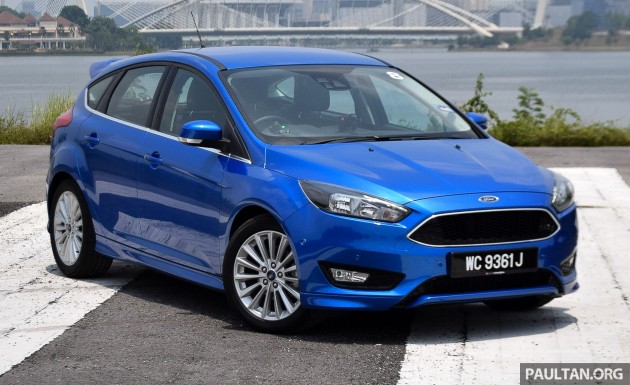
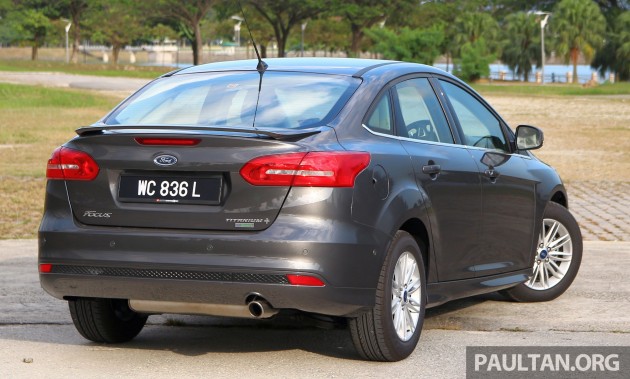
























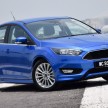
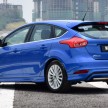
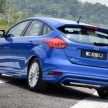
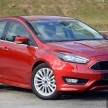
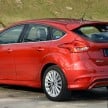
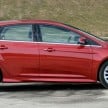
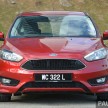
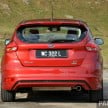
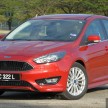
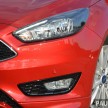
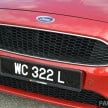
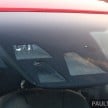
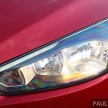
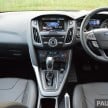
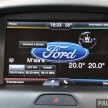
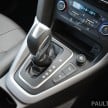
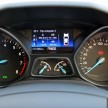
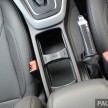
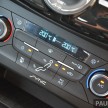
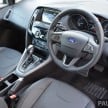
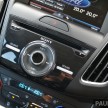
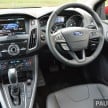
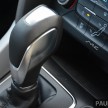
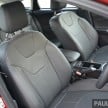
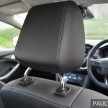
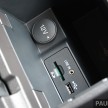
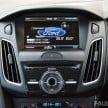
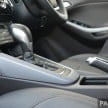
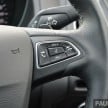
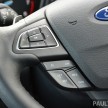
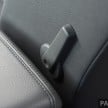
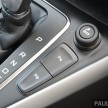
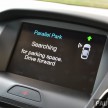
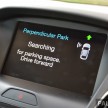
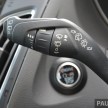
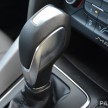
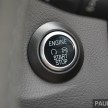
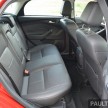
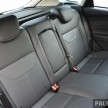
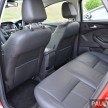
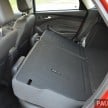
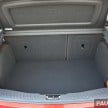
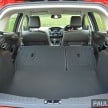
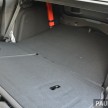
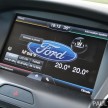
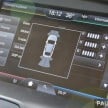
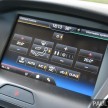
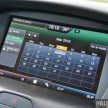
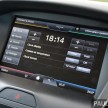

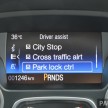
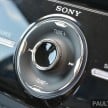
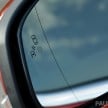
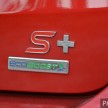
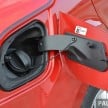
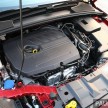

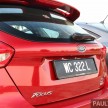
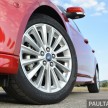
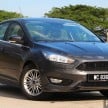
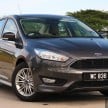

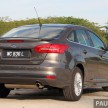
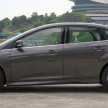
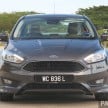
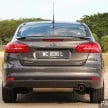
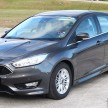
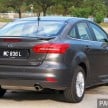
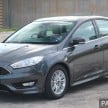
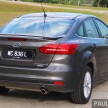
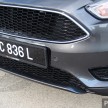
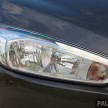
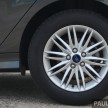
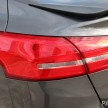
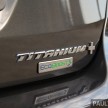
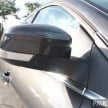
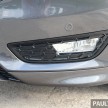
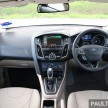
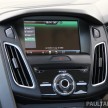

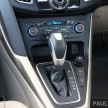
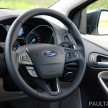
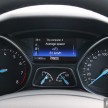
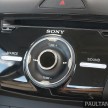
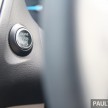
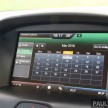
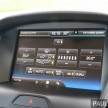
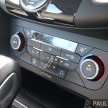
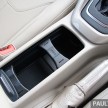
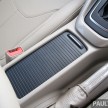
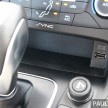
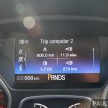
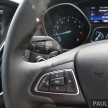
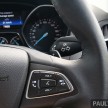
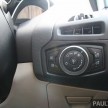
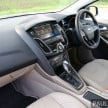
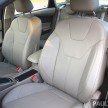

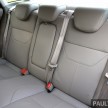
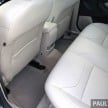

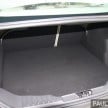
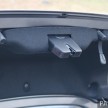
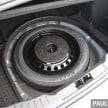
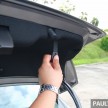
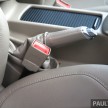
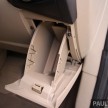

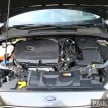
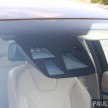
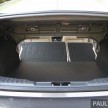
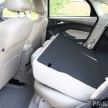
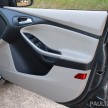
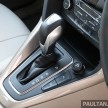

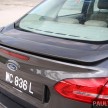
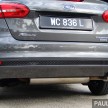

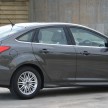














AI-generated Summary ✨
Comments on the blog post about the 2016 Ford Focus mainly express mixed perceptions on its performance, features, and value. Some feel its turbo engine isn't particularly fast, comparing it unfavorably to older NA cars like the Proton Satria Gti. Others highlight the car's good stability, tech features, and segment-leading power, but point out limitations such as space, lack of LED headlamps, and missing rear vents. Several comments discuss reliability concerns, especially regarding the DCT transmission and clutch issues, with some owners expressing dissatisfaction with Ford’s after-sales service. Price comparisons and discussions about features like advanced headlamps and touchscreen availability also appear. Overall, the sentiments are a mix of admiration for the car’s specifications and skepticism about its long-term reliability and value for money.